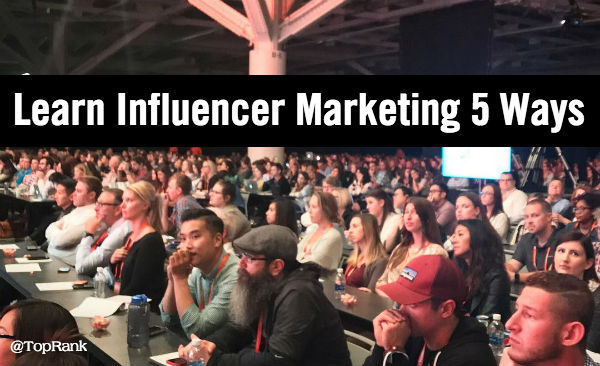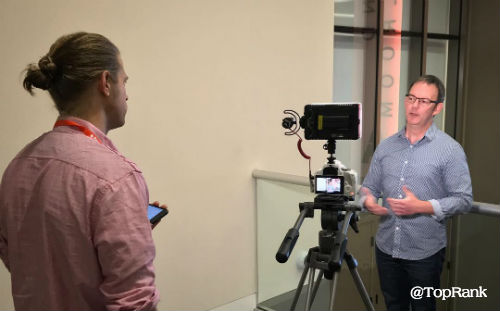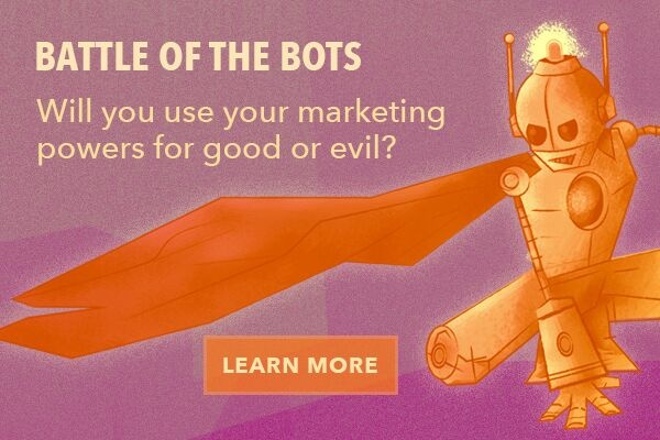

In today’s talent market, voluntary turnover rates are at an all time high. With the average turnover rate across all sales industries being 11.5 percent – software sales holding the top spot at 15.3 percent turnover – it’s more crucial than ever to create a work environment your sales team doesn’t want to leave.
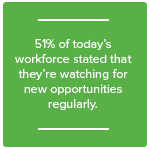
With a record setting 51 percent of today’s workforce stating they’re watching for new opportunities regularly, Human Resources (HR) Leaders need to improve and maintain the aspects of their organization that top performing salespeople value most. These aspects include competitive compensation structures, training programs, opportunities for professional growth, flexible work location and schedule, and vacation time.
But there is another tactic HR Leaders can leverage to reduce sales force turnover and that is sales team building activities – both one-on-one and group based.
In this article we list and discuss the five most effective sales team building activities and how they help foster a work environment that builds employee loyalty, improves job satisfaction rates, and reduces voluntary turnover.
Skip to section:
Conduct stay interviews
Have collaborative huddles
Foster a team-based selling environment
Create a team scoreboard
Implement gamification
Facilitate side projects
Corporate Community Initiative (CCI)
Activities with remote employees
Download stay interview questions
Here is a list of the five most effective sales team building activities HR Leaders can use to reduce turnover rates:
1. Conduct “Stay Interviews”
Stay interviews are an effective way of gaining insight into what your employees enjoy most about their role and the organization, and on the flipside, what they don’t like.
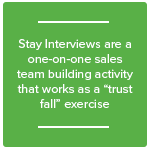 It is a proactive approach designed to address any internal issues that may cause voluntary turnover, versus a reactive approach, which involves conducting an exit interview once a sales rep decides to leave.
It is a proactive approach designed to address any internal issues that may cause voluntary turnover, versus a reactive approach, which involves conducting an exit interview once a sales rep decides to leave.
This one-on-one sales team building activity works as a trust fall exercise to keep a workforce engaged and on your team. It develops trust with your sales reps over time as you take steady action to follow through on promises of improvement. Some of these improvements could be with company culture, role attributes, company leadership, etc.

Susan Seip – HR Director at Easterseals Louisiana and former HR Manager at Geocent, states:
“It’s a relationship review. What’s your relationship to the company, the project team and your manager and what is within our purview to do to make those better? Stay interviews encourage managers to sit down and have a structured talk with their teams about what works and what doesn’t work for them.”
As HR Leaders build trust with their sales teams, sales reps are more likely to proactively share underlying concerns. As long as their HR Leader follows through with necessary action, they will continue to work with HR to improve their role and the organization.
 The success of these interviews is dependent on the interviewer’s ability to remain open-minded and use both the positive and negative feedback to improve employee experience and employer brand.
The success of these interviews is dependent on the interviewer’s ability to remain open-minded and use both the positive and negative feedback to improve employee experience and employer brand.
For existing employees, conduct your stay interviews once per year during a slow business period. Conduct them all within a few weeks of each other so you can then take what you’ve learned and make any necessary changes.
For new employees, conducting stay interviews after their first 30 days and then again at 90 days is recommended.
When conducting the stay interview, questions should be broken down into three categories:
 1. General questions to break the ice and gain insight into the employee’s feelings about your organization.
1. General questions to break the ice and gain insight into the employee’s feelings about your organization.
2. Questions relating to the employee’s role.
3. Questions that provide insight into their level of satisfaction with compensation and company perks.
You may also want to include time at the end of the interview for employees to include any information you may have missed, or to provide any additional suggestions.
Our list of stay interview questions:
| Examples of general questions: |
- Do you believe that your work has meaning? How can we work together to make your work more meaningful?
- Is the organization providing you with opportunities to grow and develop as a person and as a professional? What would improve your opportunities?
- Do you feel that you have the necessary control over your job to perform most successfully and productively?
- What type of feedback would you like to receive about your performance that you are not receiving now? From me? From coworkers?
- Do you respect the amount and kind of leadership that you receive from the senior managers?
|
| Examples of role specific questions: |
- Do you believe that your work has meaning? How can we work together to make your work more meaningful?
- Is the organization providing you with opportunities to grow and develop as a person and as a professional? What would improve your opportunities?
- Do you feel that you have the necessary control over your job to perform most successfully and productively?
- What type of feedback would you like to receive about your performance that you are not receiving now? From me? From coworkers?
- Do you respect the amount and kind of leadership that you receive from the senior managers?
|
| Examples of sales specific questions: |
- Do you believe your sales goals are attainable? What can we do to make them more attainable?
- Is the organization providing you with enough sales support to do your job successfully? What kind of support would help you in your role?
- Do you feel that your goals are clearly set? How can we work together to create clear goals?
- What kind of feedback would you like to receive from your manager during your performance review? What can we do to make performance reviews more enjoyable and effective?
- Do you respect the amount and kind of sales leadership that you receive from senior management? What can we do to improve our leadership efforts?
|
| Examples of compensation and perks questions: |
- Do you think your compensation is in alignment with the local market?
- What would you like to see in the employee benefits package that is not currently offered?
- When you consider the employee activities, events, parties, company sponsored sports teams, company paid race entries, company provided meals and snacks, and family activities, which would you like to see continued?
|
Please note: The stay interview questions are available for download at the end of the article.
Do stay interviews really work and are they worth the effort?
One organization that has experienced success implementing stay interviews is NOVO 1.
After implementing stay interviews with over one thousand employees, their voluntary turnover rate immediately decreased by 20 percent.
 Mary Murcott – Founder and President at Performance Transformations Inc. and former President and CEO at NOVO 1, states:
Mary Murcott – Founder and President at Performance Transformations Inc. and former President and CEO at NOVO 1, states:
“We build walls between us and employees by asking opinions in anonymous surveys which protect us from looking in their eyes and hearing their words. Maybe down deep we have a fear that they will ask for something and we’ll have to say no. We can’t become a great company unless we ask, listen, and then consider every reasonable request.”
2. Have collaborative huddles
A collaborative huddle is a group-based sales team building activity that serves a different purpose than a sales meeting. While sales meetings often include updates about:
- Previous sales activity (number of meetings, cold calls, presentations, etc)
- Pipeline status
- Goal status
- Deal status
- Scheduled sales activities
A collaborative huddle addresses mistakes and obstacles your sales reps are presented with. And your team pools their talent and skills to find a solution.
Collaborative huddles are an important sales team building activity because a continuous obstacle that goes unaddressed can cause a sales rep to become unmotivated and disengaged. As a result, they may look for opportunities elsewhere.
 Some obstacles include:
Some obstacles include:
- A client who’s hesitant to work with them
- Going up against a big name competitor to win a deal
- Issues penetrating a target account
- An unsatisfied or disgruntled client
Also, two heads are in fact better than one, according to Scientific America. People perform better and make more intelligent decisions when they put their heads together, versus working alone. It allows open communication and collaboration to address challenges that sales reps may not be able to solve on their own.
 “An idea is a network,” says Steven Johnson during his TED Talk titled: Where Good Ideas Come From. “I’ve been kind of on this quest to investigate this question of where good ideas come from. What are the environments that lead to unusual levels of innovation, unusual levels of creativity? I’ve started calling it the “liquid network,” where you have lots of different ideas that are together, different backgrounds, different interests, jostling with each other, bouncing off each other — that environment is, in fact, the environment that leads to innovation.”
“An idea is a network,” says Steven Johnson during his TED Talk titled: Where Good Ideas Come From. “I’ve been kind of on this quest to investigate this question of where good ideas come from. What are the environments that lead to unusual levels of innovation, unusual levels of creativity? I’ve started calling it the “liquid network,” where you have lots of different ideas that are together, different backgrounds, different interests, jostling with each other, bouncing off each other — that environment is, in fact, the environment that leads to innovation.”
To implement this sales team building activity, HR Leaders need to ensure their sales leaders are scheduling regular meetings so sales reps can collaborate on their issues.
 Advise your sales leaders that these huddles can be held on a weekly, monthly, or quarterly basis, and can be combined with their regularly held sales meetings to save time. We recommend setting aside 20-30 minutes at the end of the sales meetings to allow your team to collaborate on their issues. Depending on the size of the sales team, your sales leaders may need to schedule more or less time.
Advise your sales leaders that these huddles can be held on a weekly, monthly, or quarterly basis, and can be combined with their regularly held sales meetings to save time. We recommend setting aside 20-30 minutes at the end of the sales meetings to allow your team to collaborate on their issues. Depending on the size of the sales team, your sales leaders may need to schedule more or less time.
3. Create a team-based selling environment
A team-based selling environment is where a group of salespeople work towards a common sales goal. Each rep is closely connected with their team members and combine their knowledge, experience and skills to prospect and develop new business as a group.
Creating a team based selling environment is beneficial because top performing salespeople work to engage with their colleagues and coordinate their abilities to hit their targets.
 With the amount of sales teams who practice team-selling increasing from 22 percent to 49 percent, team selling now accounts for 44 percent of the overall impact on a company’s profitability.
With the amount of sales teams who practice team-selling increasing from 22 percent to 49 percent, team selling now accounts for 44 percent of the overall impact on a company’s profitability.
This means that HR Leaders have the opportunity to not only increase employee engagement and decrease sales turnover, but also increase profitability through team selling.
A large media company saw great success in a team-based selling environment. They invested in an internal social-networking platform with a goal of getting their sales reps to exchange information about complex accounts. As a result, cross-selling increased, sales cycles decreased and conversion rates went up.
Here are some examples of sales team building activities HR Leaders can use to create a team-selling environment:
Create a scoreboard
Having a scoreboard does more than just keep track of how your sales reps are doing against their targets. They foster healthy competition amongst the sales team and they help your sales leaders understand what aspects of their sales process are working and what’s not.
This sales team building activity is another way HR Leaders can be proactive about making necessary process changes to keep sales reps loyal and engaged.
For example, your sales leader notices there is a drastic difference between the amount of presentations given and the amount of deals won. HR Leaders can address the issue by helping to facilitate workshops and improve on presentation and follow-up skills.

Bob Ruffolo – founder and CEO of IMPACT, states:
“Sales success requires great salespeople in a great system.
You can get by with one or the other, but top performers can only do so much with a broken process and most likely won’t stick around”
When creating the scoreboard, make sure your sales leaders hone in on what metrics are important and over what period of time they will be measured. The scoreboard should include each sales rep’s name, their specific targets and their actual results.
Examples of metrics your sales leaders may include:
- Individual quotas for each sales rep (if you do a team quota, list the overall target and the revenue each sales rep has generated to achieve the collective goal)
- Level of activity (number of cold calls, sales meetings, trade shows, etc)
- Number of Sales Qualified Leads (SQLs)
- Pipeline size
- Number of deals closed (new and existing business, or a combined target)
Some tools your sales leaders can use to create the scoreboard include:



Implement gamification
Gamification is used to describe the application of traditional game elements to other activities to encourage engagement and drive. In a selling environment, HR Leaders can use it it to encourage collaboration and healthy competition amongst the team.
 While gamification is often associated with younger generations – such as millennials – it can be implemented and used to motivate all generations. Top performing salespeople are driven individuals who have a desire to compete and win. Gamification fulfills these desires.
While gamification is often associated with younger generations – such as millennials – it can be implemented and used to motivate all generations. Top performing salespeople are driven individuals who have a desire to compete and win. Gamification fulfills these desires.
One organization in particular that has had success after implementing gamification into their selling environment is Stanley Black & Decker. Their goal was to bring in gamification to drive results with their more seasoned salespeople, especially those who tended to resist new technology.
The results they achieved were a 29 percent increase in pipeline activity, a 43 percent increase in documented opportunities and 70 percent of employees showed engagement.

Before choosing the kind of gamification to implement, help your sales leaders determine their goals by having them think about this statement:
If our sales team did more of X, or did X more effectively, we would hit our targets this quarter/year.
Once the goal is established, determine what gamification is most effective in achieving your sales leader’s desired results.
Some gamification options to provide your sales leaders include:
1. Leveraging their peers
To encourage collaboration on your sales team, create a system awarding points when sales tips are exchanged. It facilitates a team-selling environment while aiding reps in achieving their individual targets.
2. Taking a new product to market
 If your sales team isn’t talking about the new product with their clients, create a leadership board that rewards reps when they pitch it. HelloWorld used this concept and created a hashtag that was logged into Salesforce by the sales reps. As a result, they saw the product sales increase by 230 percent and the product pitches doubled.
If your sales team isn’t talking about the new product with their clients, create a leadership board that rewards reps when they pitch it. HelloWorld used this concept and created a hashtag that was logged into Salesforce by the sales reps. As a result, they saw the product sales increase by 230 percent and the product pitches doubled.
3. Leverage your sales process to increase win rates
Collaborate with your sales leaders to analyze the sales process and determine what stage holds the highest win rate. Once that is determined, run a contest that gives points once the sales reps move an opportunity into that stage. This not only advances opportunities but it also helps keep your client data accurate.
4. Selling a particular product or service
If you have a product or service you want sold quickly – perhaps sales for this particular product are down or you have a new product launching – create a contest that awards points every time a sales rep successfully sells said product or service.
4. Facilitate side projects outside of their role responsibilities
 Using side projects as a sales team building activity is a way for HR Leaders to increase their sales reps’ sense of purpose within the organization – which fosters loyalty and decreases voluntary turnover.
Using side projects as a sales team building activity is a way for HR Leaders to increase their sales reps’ sense of purpose within the organization – which fosters loyalty and decreases voluntary turnover.
They allow your salespeople to feel like their role has a greater impact on the company as a whole. In fact, 78 percent of millennial employees say it’s important to have side projects as another area of growth opportunity.
In a recent interview with HR Magazine, Anita Rai, Employment Law Partner at Taylor Vinters, stated:
“…most people do not know how to bring their ideas to fruition, they might be open to developing their idea with their employer. This will help the employer keep a hand on what is going on with their employees and how they are feeling, as well as potentially lead to interesting business opportunities,”
When considering what kinds of side projects to offer your sales team, think about these areas of the project:
- The format in which it will be given
- The time they will be allocated
- The results you would like to achieve.
 Debbie Madden, CEO and cofounder of Stride – an agile software development consultancy, based in New York City – explains that for 13-years she has been holding quarterly open space meetings where the entire company comes together for a whole day to discuss new ideas:
Debbie Madden, CEO and cofounder of Stride – an agile software development consultancy, based in New York City – explains that for 13-years she has been holding quarterly open space meetings where the entire company comes together for a whole day to discuss new ideas:
“Almost every single cool thing at Stride has come out of our Open Space meetings. It’s not a hackathon, so we’re not creating ‘products.’ We’re creating policy. [An] amazing idea that came out of a Stride Open Space is our monthly Lean Coffee. We talk as an entire company about the single most important issue facing our team at the time. The issue is self selected and voted on by all of Stride.”
Some projects you could facilitate include:
1. Peer mentorship opportunities
Going through the onboarding experience can be daunting and is filled with the pressures of ramping up. Tenured sales reps have knowledge about the company, its products and services, its clients, and best practices.
HR Leaders can have tenured sales reps provide lessons on products and services, sales best practices, and much more. The new sales reps could also shadow the tenured sales reps in the field as they move through their sales cycles.
 As a result of peer-lead teaching, your new sales reps can experience a 2 percent increase in sales training “stickiness” – which refers to how well information in retained – according to the Sales Leadership Council.
As a result of peer-lead teaching, your new sales reps can experience a 2 percent increase in sales training “stickiness” – which refers to how well information in retained – according to the Sales Leadership Council.
Having the tenured sales reps teach the new sales reps bridges the knowledge gap, decreases ramp up time, and offers the tenured sales reps opportunity to improve their leadership skills.
2. Two second lean
Salespeople are busy and often so focused on hitting their targets that they don’t have time for side projects. However, encouraging them to practice “two-second lean” allows them to work on a new project and decrease the time needed for everyday tasks.
These “two-second lean” projects could include simplifying the way information is inputted into the CRM, decreasing travel time, or simplifying how expenses are submitted.
3. Professional certifications
 Earning a professional certification not only validates you sales rep’s expertise but it also gives your clients a higher level of confidence in your business. Your sales team will become more engaged since you are invested in their professional development and helping them take the next steps in their career.
Earning a professional certification not only validates you sales rep’s expertise but it also gives your clients a higher level of confidence in your business. Your sales team will become more engaged since you are invested in their professional development and helping them take the next steps in their career.
Companies like Microsoft, IDC, CompTIA and Novell have experienced increases in productivity due to their professional certifications preparing employees for their day-to-day challenges.
Some professional certifications you could offer include sales methodology training, seminars for presentation skills, leadership skills, etc.
5. Have a Corporate Community Initiative (CCI)
Companies that encourage community involvement not only distinguish themselves from their competitors, but also see the benefits of happier employees. Community involvement as a sales team building activity shows your sales reps that their role serves a larger purpose.
 In a recent study done by Deloitte and Points of Light Institute, 74 percent of the white collar workers who participated in their CCI stated that it had a positive effect on their careers.
In a recent study done by Deloitte and Points of Light Institute, 74 percent of the white collar workers who participated in their CCI stated that it had a positive effect on their careers.
In addition:
- 83 percent of professional women reported that their CCI developed their leadership skills
- 78 percent reported improvements in their communication skills
- Over 50 percent reported improvement in other workplace skills.
Below are some examples of companies who leverage CCIs to develop their employees’ skills and grow their employee bond:
Dow Corning
An employee was sent to Bangalore, India to participate in Dow’s international volunteer program. This program sends employees on a pro bono basis to work with NGOs and entrepreneurs in emerging countries.
 One employee, an electrical apprentice, worked for four weeks with a local community and a team to improve the manufacturing process at Sustaintech – a local clean cookstove producer.
One employee, an electrical apprentice, worked for four weeks with a local community and a team to improve the manufacturing process at Sustaintech – a local clean cookstove producer.
Throughout the experience, this employee learned leadership, problem solving, and out-of-box thinking skills. After returning to work, she stated she was excited about her future with Dow and hoped to move up in the company in the future.
Team One
 Employees from Team One’s Atlanta office take over for the staff at the Atlanta Children’s Shelter one day every month. The volunteers look after the children so the shelter staff can hold their monthly meetings. The volunteers also help with classroom decorating and provide creative projects for the children.
Employees from Team One’s Atlanta office take over for the staff at the Atlanta Children’s Shelter one day every month. The volunteers look after the children so the shelter staff can hold their monthly meetings. The volunteers also help with classroom decorating and provide creative projects for the children.
An Account Coordinator stated the volunteering has deepened her understanding of the advertising industry and corporate philanthropy. She attributes her professional development to the volunteer program and gained valuable skills to help her work effectively with coworkers and clients.
Doing these activities with remote employees
More and more salespeople are doing their job remotely and at different times of the day. From 2012 to 2016 the number of remote employees rose by four points, taking it from 39 percent to 43 percent.
 This means that employees have fewer face-to-face interactions with their managers and coworkers, and they’re communicating more through e-mail, instant messaging and conference calls.
This means that employees have fewer face-to-face interactions with their managers and coworkers, and they’re communicating more through e-mail, instant messaging and conference calls.
To ensure HR Leaders are conducting effective sales team building activities with remote employees, we recommend using video conference software. Video conferencing encourages both participation and more face-to-face interaction.
Video conferencing is particularly useful for collaboration meetings, team-selling activities and side-projects.
Some video conferencing tools you can leverage include:


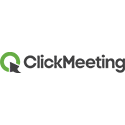
With CCIs and stay interviews, bring your remote employees into the office once or twice per year. As stay interviews are done annually and during slow business periods, bringing them in for a face-to-face meeting yields better results.
Decrease Your Voluntary Employee Turnover
 Using sales team building activities not only decreases voluntary turnover rates but also increases employee loyalty – which is the heart of successful companies, according to Entrepreneur.
Using sales team building activities not only decreases voluntary turnover rates but also increases employee loyalty – which is the heart of successful companies, according to Entrepreneur.
The more employee loyalty HR Leaders facilitate, the more the sales reps will go above and beyond to help their organization improve and succeed. Loyal employees share their expertise, they boost morale, and they consistently hit their sales targets.
Keeping your sales team engaged and feeling positively about your organization will help ensure your turnover rate stays to a minimum and your top sales talent continues to generate revenue and profitability for your organization.
Download your list of Stay Interview Questions here.
Back to the top
The post 5 Sales Team Building Activities That Reduce Turnover Rates appeared first on Peak Sales Recruiting.















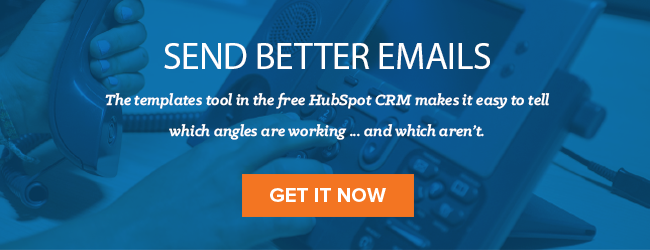
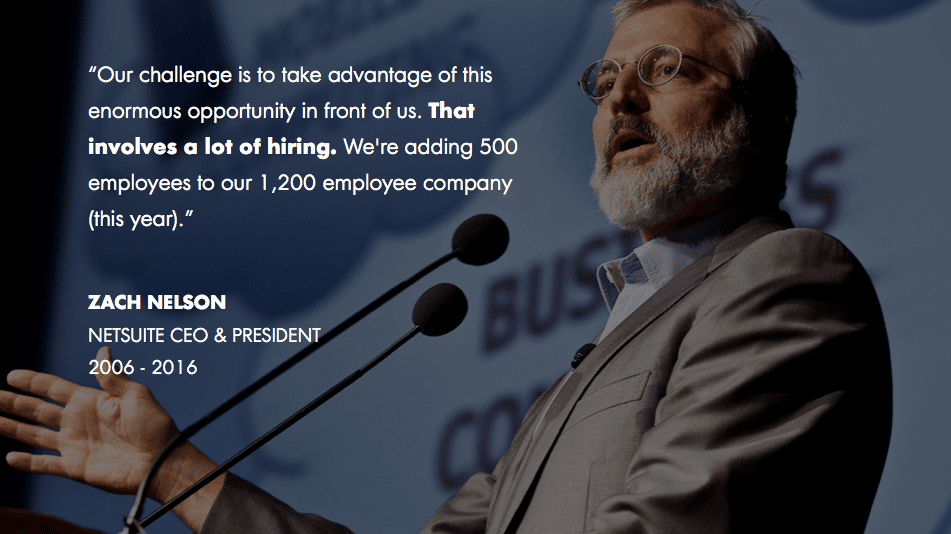





 It is a proactive approach designed to address any internal issues that may cause voluntary turnover, versus a reactive approach, which involves conducting an exit interview once a sales rep decides to leave.
It is a proactive approach designed to address any internal issues that may cause voluntary turnover, versus a reactive approach, which involves conducting an exit interview once a sales rep decides to leave. 
 The success of these interviews is dependent on the interviewer’s ability to remain open-minded and use both the positive and negative feedback to improve employee experience and employer brand.
The success of these interviews is dependent on the interviewer’s ability to remain open-minded and use both the positive and negative feedback to improve employee experience and employer brand.  1. General questions to break the ice and gain insight into the employee’s feelings about your organization.
1. General questions to break the ice and gain insight into the employee’s feelings about your organization.
 Mary Murcott
Mary Murcott Some obstacles include:
Some obstacles include:
 “An idea is a network,” says
“An idea is a network,” says  Advise your sales leaders that these huddles can be held on a weekly, monthly, or quarterly basis, and can be combined with their regularly held sales meetings to save time. We recommend setting aside 20-30 minutes at the end of the sales meetings to allow your team to collaborate on their issues. Depending on the size of the sales team, your sales leaders may need to schedule more or less time.
Advise your sales leaders that these huddles can be held on a weekly, monthly, or quarterly basis, and can be combined with their regularly held sales meetings to save time. We recommend setting aside 20-30 minutes at the end of the sales meetings to allow your team to collaborate on their issues. Depending on the size of the sales team, your sales leaders may need to schedule more or less time. With the amount of sales teams who practice team-selling increasing from
With the amount of sales teams who practice team-selling increasing from 



 While gamification is often associated with younger generations – such as millennials – it can be implemented and used to motivate all generations. Top performing salespeople are driven individuals who have a desire to compete and win. Gamification fulfills these desires.
While gamification is often associated with younger generations – such as millennials – it can be implemented and used to motivate all generations. Top performing salespeople are driven individuals who have a desire to compete and win. Gamification fulfills these desires. 
 If your sales team isn’t talking about the new product with their clients, create a leadership board that rewards reps when they pitch it.
If your sales team isn’t talking about the new product with their clients, create a leadership board that rewards reps when they pitch it.  Using side projects as a sales team building activity is a way for HR Leaders to increase their sales reps’ sense of purpose within the organization – which fosters loyalty and decreases voluntary turnover.
Using side projects as a sales team building activity is a way for HR Leaders to increase their sales reps’ sense of purpose within the organization – which fosters loyalty and decreases voluntary turnover. Debbie Madden
Debbie Madden As a result of peer-lead teaching, your new sales reps can experience a
As a result of peer-lead teaching, your new sales reps can experience a  Earning a professional certification not only validates you sales rep’s expertise but it also gives your clients a higher level of confidence in your business. Your sales team will become more engaged since you are invested in their professional development and helping them take the next steps in their career.
Earning a professional certification not only validates you sales rep’s expertise but it also gives your clients a higher level of confidence in your business. Your sales team will become more engaged since you are invested in their professional development and helping them take the next steps in their career.  In a recent study done by Deloitte and Points of Light Institute,
In a recent study done by Deloitte and Points of Light Institute,  One employee, an electrical apprentice, worked for four weeks with a local community and a team to improve the manufacturing process at Sustaintech – a local clean cookstove producer.
One employee, an electrical apprentice, worked for four weeks with a local community and a team to improve the manufacturing process at Sustaintech – a local clean cookstove producer.  Employees from Team One’s Atlanta office take over for the staff at the Atlanta Children’s Shelter one day every month. The volunteers look after the children so the shelter staff can hold their monthly meetings. The volunteers also help with classroom decorating and provide creative projects for the children.
Employees from Team One’s Atlanta office take over for the staff at the Atlanta Children’s Shelter one day every month. The volunteers look after the children so the shelter staff can hold their monthly meetings. The volunteers also help with classroom decorating and provide creative projects for the children.  This means that employees have fewer face-to-face interactions with their managers and coworkers, and they’re communicating more through e-mail, instant messaging and conference calls.
This means that employees have fewer face-to-face interactions with their managers and coworkers, and they’re communicating more through e-mail, instant messaging and conference calls. 


 Using sales team building activities not only decreases voluntary turnover rates but also increases employee loyalty – which is the heart of successful companies, according to
Using sales team building activities not only decreases voluntary turnover rates but also increases employee loyalty – which is the heart of successful companies, according to 



